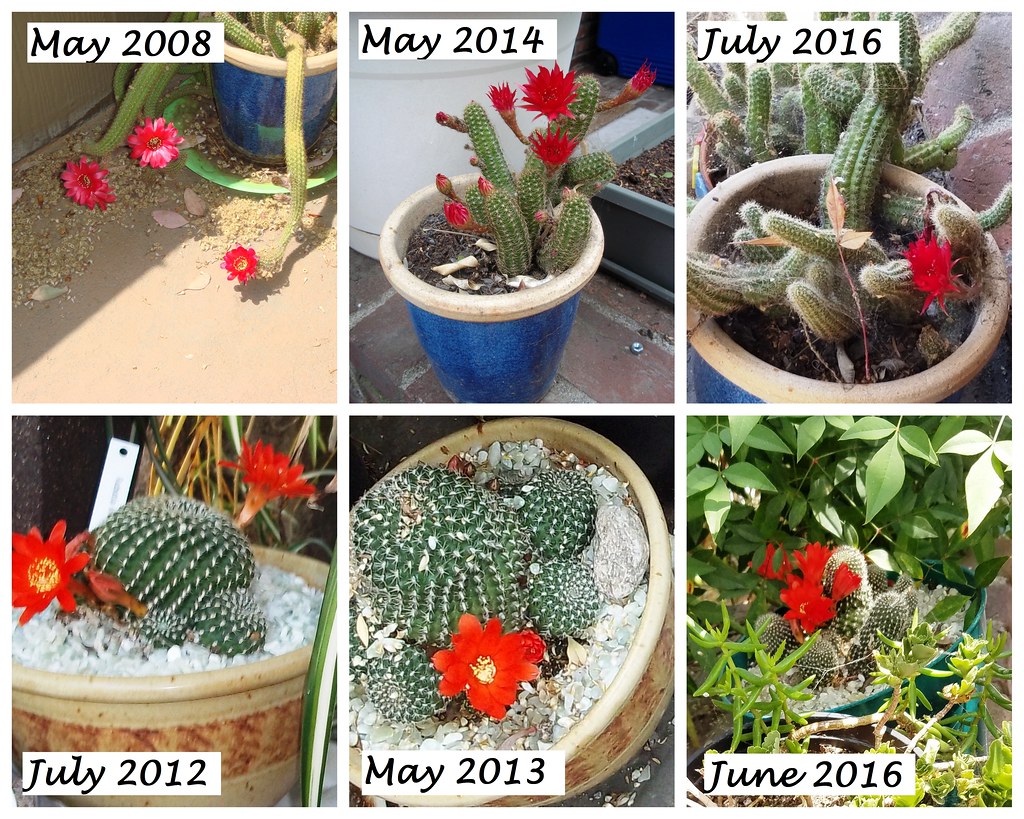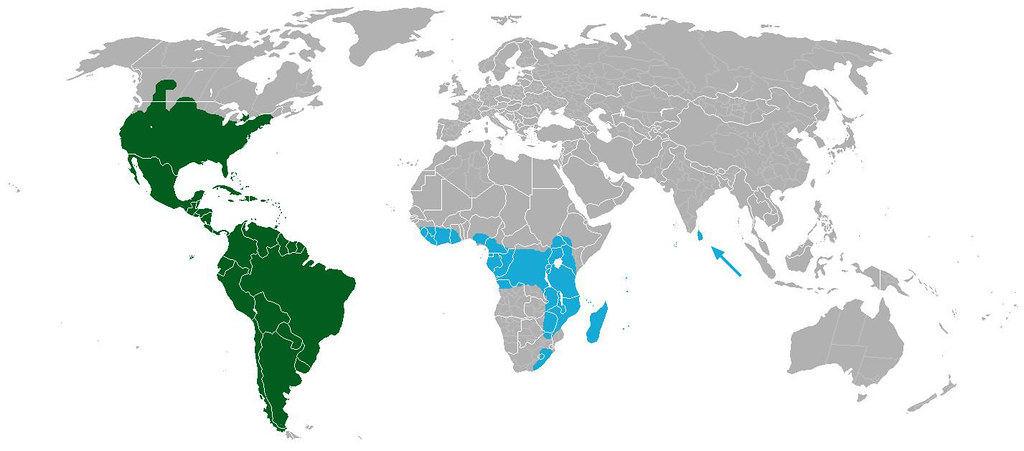
What I love about cacti is how they flower just at the time I need a reminder that even prickly things can be beautiful. The plant on top might be a peanut cactus (Echinopsis chamaecereus) which I have had since college, possibly 20 years.
The plant on bottom is definitely crown cactus (Rebutia krainziana) that I got at a Cactus and Succulent Society of America (CSSA) annual show and sale at the Huntington Library 4 years ago. When these plants bloom, I know the regular academic year has ended and summer is here! Usually I get one or two flowers around my birthday (in July). And these flowers aren't shrinking violets, they're vibrant in color, shocking pink or rich red-orange. These two varieties of cactus are ideal for container gardening, since they are petite and would be easily overwhelmed among other plants in a large garden.
I'm hoping to visit the Cactus and Succulent Society of America (CSSA) Intercity Show at the LA County Arboretum happening next weekend, August 13-14, 2016. I've always wanted to visit the arboretum, and this will give me an excuse to spend a day there.
Freaky Flowers: Echinopsis Cacti in Bloom from EchinopsisFreak on Vimeo.
Flowering aside, what I admire about cacti is their ability to grow in arid environments. With the drought in the Southwestern US, maybe more people should embrace the cactus (not literally, of course, due to their spikiness). The graphic below from the National Weather Service uses a chocolate-brown color to depict areas in drought. This assessment was issued July 21st. The next seasonal drought outlook will be issued on August 18th.
Cacti produce food; ever heard of pitaya or nopal? Nopal is from the Opuntia cactus (like the one pictured below). This cactus was photographed at the CSUN Botanic Garden, which contains 1,200 different varieties of plants, including California native plants such as Opuntia littoralis. I wonder if cacti will become more popular out of necessity if we enter a period of megadrought, as predicted if climate change continues.
I feel like even cacti are feeling the drought. The Opuntia (prickly pear) in the botanic garden are watered regularly (image above), but this massive momma (image below) is on a busy streetcorner. It seemed like all the pads were dehydrated, like paper-thin. I didn't see any sprinkler system here. Maybe there's runoff from the yard behind that keeps the whole colony alive.
Cacti originated in the Americas from three main areas: Mexico/United States, Peru/Bolivia/Chile/Argentina, and Brazil. Their habitat is shown in green in the map below. The blue is the mistletoe cactus (Rhipsalis baccifera) which is found in tropical regions. In Australia, the Opuntia are considered Weeds of National Significance, since they are not native to the area.
Shoutout to the Cactus Store in Echo Park. I saw an article about you in the Los Angeles Times. We were in your neighborhood last weekend, but didn't realize it until the next day. I'd love to come browse your diverse collection. Until then, I will follow you on instagram. Let's remind people how beautiful cacti can be and how appropriate for our climate.
An important function of plants is that they absorb carbon dioxide produced via combustion and respiration and turn it into sugar, releasing oxygen so that we can breathe. Cacti are able to do this with lower requirements for water and a higher tolerance for heat. For a description of metabolism in cacti, without breaking out the biology textbook, see here. For a comparison of the adaptations in cacti versus "normal" plants, see here.
I like the above photo because it makes everything pretty simple. All plants produce oxygen in the daytime and absorb carbon dioxide at night. Cacti photosynthesize in their stems instead of leaves, in order to minimize their surface area-to-volume ratio, minimizing water loss via transpiration.
It's easy to propagate cacti. Echinopsis and Opuntia have offsets or "pups" and "ears" or segments that can be easily detached. I have not used a rooting hormone on these, just set them or slightly bury them upright in soil and voilà! The Rebutia offsets will be a bit more tricky since they need to be cut with a sterile knife, and I have many that are growing larger by the day. I tried shaking them loose recently when I repotted it, but the pups wouldn't fall away from the parent with just gentile shaking.
Maybe you can appreciate cacti for their utility (food), beauty (flowers), or metabolic efficiency. Or maybe all of these qualities appeal to you. If so, consider bringing home a cactus from a CSSA Show or the Cactus Store. It will reward you sparingly for caring for it sparingly. The most common way to kill a cactus is overwatering. Consider purchasing leather gloves for when you need to transplant your cacti.





No comments:
Post a Comment